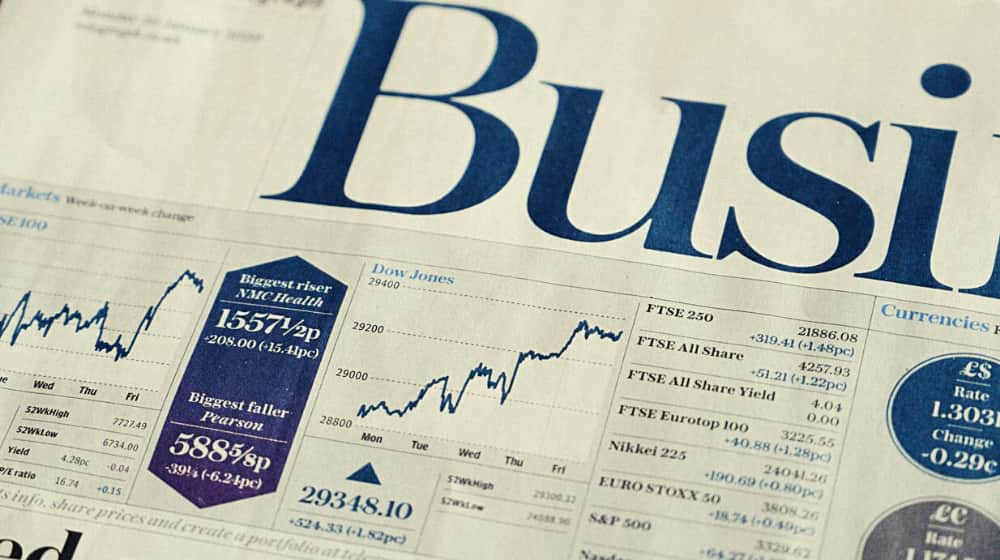Breaking News
Coronavirus: Good News, Bad News, Uncertainty and Opportunity

With all the panic, herd behavior, government reaction and whipsawing markets, it might be worth remembering that COVID-19 is not the Black Death. Contracting it is not an automatic death sentence. Never mind that this coronavirus will very likely not kill nearly as many people as the regular flu, car wrecks or past epidemics like the swine flu.
There is no doubt that the Trump Administration and other D.C. agencies are trying to get ahead of this epidemic and lessen the impact on the economy and the health care system.
The Federal Reserve, in another emergency session over the past weekend, lowered its benchmark interest rate by over a full point, on top of a half point drop last week. The Fed funds rate is now close to zero and the Fed is pledging to inject more liquidity into the system by buying $700 billion in Treasury and mortgage-backed securities. The rate to banks for short-term emergency loans has dropped to 0.25% from 1.75%.
The administration is talking about actually mailing out checks to citizens to inject cash into the system. Of course, taxpayers will be footing that bill.
Getting Ahead of the Curve

These are moves designed to get out ahead of the slowdown and prevent an all-out recession. The problem is, the stock market, in the absence of near certainty which no one can provide, has panicked to an extreme degree.
Somehow, the market has decided that there is something they don't know that the Fed knows, leading investors and traders to think things are much worse than they know. Not only psychology is involved but once computers start unwinding positions and selling things into a market with few buyers, the trend is tough to stop.
Those factors beat up the cattle futures, really distancing those markets from the reality of the meat market. The futures care about prospects, not about the real price of beef in the short term.
This week, boxed beef prices jumped $16 on Monday and $12 on what was supposed to be St. Patrick’s Day, before the panic cancelled it. Beef prices indicate that people have not stopped eating.
Meanwhile, packers are buying cattle on Mondays and Tuesdays, indicating that beef is moving. Our local beef and pork counters were mostly stocked, last time we checked, but poultry sections were empty, along with eggs.
Evidently, people have not forgotten how to grill or cook at home, and retail movement is making up for the lack of foodservice in-house dining. Of course, for those who don’t cook under even dire circumstances, people are at least allowed to come out to pick up takeout orders, as long as they do it before curfew. Heck, Londoners during the Blitz came out more than Americans are supposed to during this government response.
So How are Our Industry’s Export Customers Doing?
Well, Mexico is starting to realize The Wall is not such a bad idea if it can keep Americans from carrying the virus into their country. Wonders never cease.
South Korea may well have peaked, with COVID-19 new cases on a downward trend, finally dropping to double digit daily figures. The country has reported over 8,000 cases and 76 deaths, a mortality rate of less than 1%. Their number of cases, so far, peaked on February 29.
Japan has not peaked yet, with the highest number of new cases just recently. The number of cases has topped 1,500, almost half of those cases from the Diamond Princess cruise ship. Interestingly, Tokyo is not the city with the most number of cases. There is still argument regarding Japan’s testing approach.
Then there’s China
With the virus having been attributed by most to China, skepticism of their government pronouncements has only increased. But it appears the epidemic has peaked there, although we shall see if that holds when factories and businesses get farther along with re-starting. Regardless, China is paying a big price for the epidemic.
China reported its industrial activity was down 13.5% for the combined January-February period, much worse than the estimated 3% from analysts. Retail sales dropped 20.5%. Not surprisingly, fixed asset investment dropped by nearly 25%.
The government claims 95% of large companies outside the Hubei province that was the epicenter of the outbreak are open again, with roughly 60% of workers at small and medium sized businesses back at work.
How their output will mesh with reduced demand in the rest of the world from lockdowns and border closures remains to be seen. It will not simply be a matter of China getting back up to speed and churning out goods and parts.
Some firms in China are concerned already that multinational companies may reduce their reliance on Chinese-made products, accelerating a shift to alternative manufacturing bases and damaging the extensive infrastructure that has been constructed in the mainland over recent decades. Just-released data show investment in the manufacturing sector had dropped by over 30% in the January-February period.
A major article in Forbes examined the trend that was already in place in the last few years for many companies diversifying their supply chain. Those efforts accelerated during the trade war and are now front burner for many, given the demonstration of difficulties during the COVID-19 epidemic of getting parts and supplies, even dealing with Chinese reluctance to part with some items.
The problem is, no other country has the combination of capacity, expertise, labor and logistics setup that China has. But Mexico has taken on more complicated manufacturing in recent years and is geographically much closer. A container can be shipped from Mexico to New York in 5 days vs. 40 days from Shanghai.
Mexico's biggest problem is the safety of plants and workers, given the country's problems with cartels and crime. But business surveys have shown Mexico is definitely the destination for many companies relocating businesses out of China, now that USMCA will be coming into force.
Canada, by the way, did pass the USMCA or CUSMA as they call it, this week. So now all three countries are officially on board.
Overblown Overreaction?

It is nearly impossible to watch governors close restaurants, bars, ski resorts and other privately-owned businesses and not ponder their eagerness to exercise such sweeping powers over citizens. This over a disease outbreak that likely will not kill a fraction of the number of people killed every year in car wrecks, cancer or the run-of-the-mill flu. Even a Republican governor, Mike DeWine of Ohio, taking his role very, very seriously in closing down all restaurants and bars in the state, said, “Every day we delay, more people will die.”
So how many people will eventually die because they have no job, no income, no business, no apartment or home? The question has been asked, given that millions of people get the “regular” flu and 20-50,000 people in the U.S. die from it every year, why we don’t shut down the country over flu epidemics?
The answer is, we couldn't possibly react to flu the same way we have to this coronavirus. The country would always be shut down because regular flu is much more contagious than COVID-19 and we can't begin to stamp it out.
Americans have dealt with disease, pestilence and government bureaucracy before. It is our industry’s advantage that we operate all the time with social distancing…we just never called it that. Being in the boonies for many farmers, ranchers and feeders has always been an advantage. But now more than ever, it will enable them to produce the best food and feed just like they always have.
Steve Dittmer is a longtime beef industry commentator and executive vice president of the Agribusiness Freedom Foundation. The opinions of the author are not necessarily those of beefmagazine.com or Farm Progress.













1 Comment
Interesting